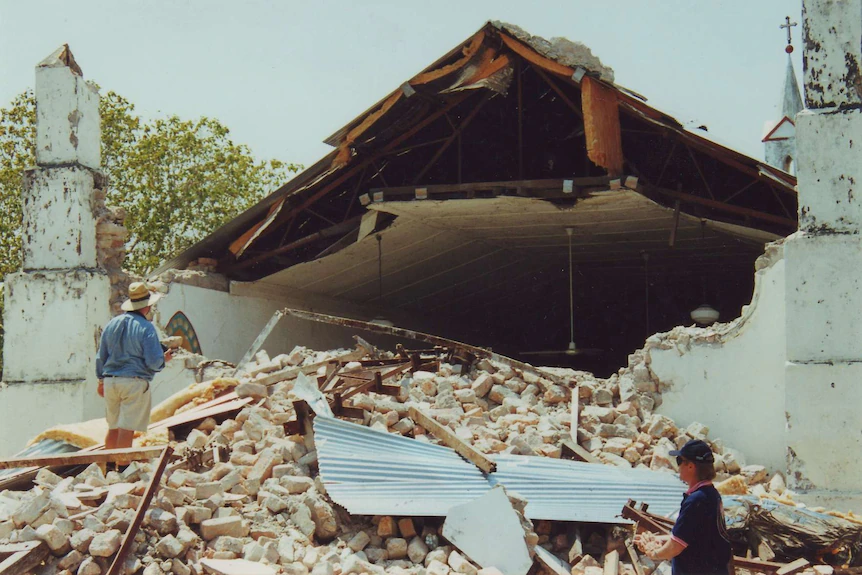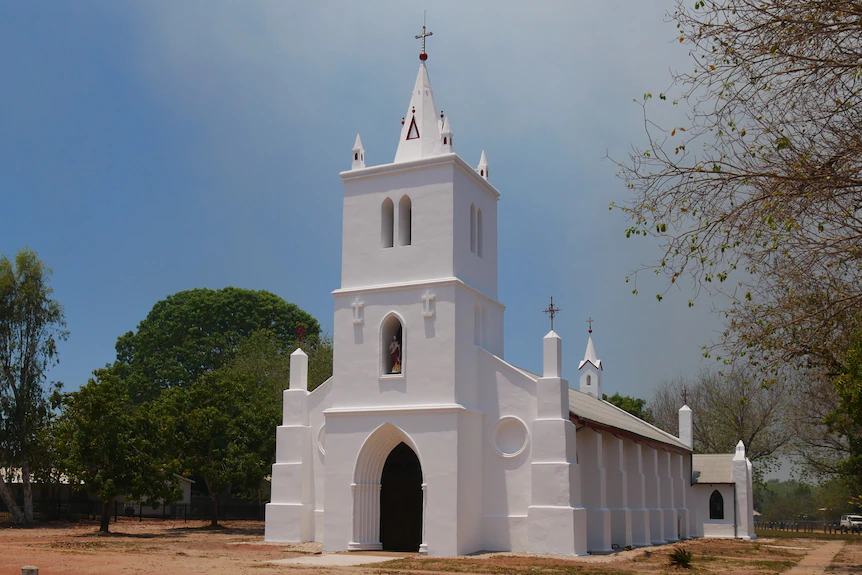|
Beagle Bay is located on the Dampier Peninsula 129 kilometres north of Broome in the Kimberly region of Western Australia.
The bay was named by John Clements Wickham in 1838 after the ship he was captaining at the time.
It is accessible by 4wd via an unsealed (often rough or impassable in the wet season) road from Broome.
Trappist monks established a community there in 1890 and Bishop Mathew Gibney established a mission to try and convert the local Aboriginal
people to Christianity.
In order to get freehold title to the land, Gibney had to show 5000 pounds worth of improvements to the site by a given date and although
this was approved, there are doubts about the veracity of these improvements.
Daisy Bates visited the settlement with Gibney and seems to have supported the claims of improvements in articles she wrote. As a reward,
Gibney gave her a position as a journalist on his newspaper, The WA Record.
A school opened in 1892 and in 1901 the mission was taken over by Pallottine priests.
A cyclone had hit the mission in 1898 destroying many buildings and the main residence burned down in 1900. This led to a number of
Trappist monks leaving and the Pallotine priests arriving to take over.
A further disaster took place in 1903 when the chapel burned down.
In 1907 nine St John of God sisters arrived from Ireland.
Three years later another cyclone struck doing considerable damage to the mission.
In 1918 the now famous pearl shell church (Sacred Heart) was opened. The church was constructed with local materials by the local
Aboriginal people. The person regarded as the architect for the building was Brother Wollseifer.
Pearl and other shell was gathered by the local people and some donated by Broome pearlers.

Image source: Trip Advisor
The decorations in the church are a mixture of Christian and Aboriginal symbols.
The original roof was made from flattened kerosene and petrol tins.
Access to the mission had been by ship until 1923 when a road south to Broome was finally opened.
Yet another cyclone devastated the mission in 1935 and another hit doing severe damage in 1957.
During WWII, the Pallotine brothers had been interned as they had come from Germany and were regarded as a security threat.
90 kilometres north of the mission is Kooljaman Cape Leveque, a remote wilderness camp that is owned and run by the local Aboriginal
people. The camp caters for tourists looking for a wilderness experience.
Visit their
website for more information.
Not far from the camp is the Cape Leveque Lighthouse that began operating in 1911.
The structure is 13 metres high wand is constructed from prefabricated sections of cast iron.
The lighthouse was upgraded in 1965 and again in 1985 when it was converted to solar power and was automated.
The last Pallotine missionary left Beagle Bay in 2000 and a year later the church tower collapsed.

Image source: ABC News
Restoration work was done and the church tower was rebuilt after the state government supplied a heritage grant to the community.
Beagle Bay was closed to the general public during the Covid19 epidemic.
|









